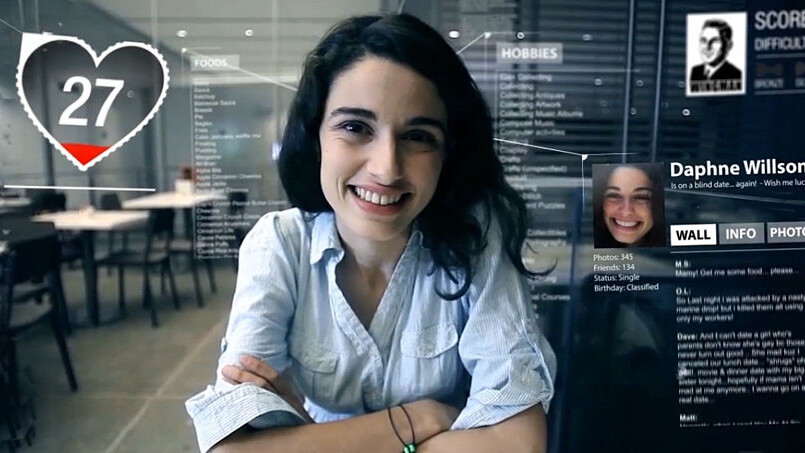
This article is part of a series written by speakers featuring at our upcoming 10th anniversary TNW Conference Europe. Scott Smith is the founder of Changeist, a lab, research tank and consultancy created to identify and make sense of weak signals of change.
Sometimes the signals come in threes. On a recent night I found myself reading up on Meerkat, the hot new app of the moment that allows live streams of video to be broadcast via Twitter links, wondering what new use cases will emerge—will it be the new GoPro or another ChatRoulette?
Shortly after, I took in a solid Friday night thriller film, Nightcrawler, wherein Jake Gyllenhaal plays a seedy, overly aggressive freelance video cameraman who chases police scanner feeds to find the next gruesome scene into which he can point his camera. The film is, among other things, a statement on the increasingly crass monetization of human pain and suffering.
Then I awoke to the bizarre news of Greece’s new finance minister proposing to crack down on tax avoidance in his struggling country by paying citizens and tourists to work part time to out tax cheats “while ‘wired’ for sound and video.” Sort of a ‘TaxRabbit,’ if you will, a government-run sousveillance scheme.
While no-one seriously expects the latter proposal to actually happen, it does bring to mind some interesting near future scenarios. A year or so ago, I wrote a piece of speculation wondering if people might pay, or have to pay, for selective vision—to see things, or been shielded from them.
Embodied media beacons
The three signals above made me start considering the opposite, that we are quite close to a kind of paid-for first person surveillance/journalism that goes beyond what’s been experience with citizen journalism up to now: home video, smartphones, or dashcams. People will soon be paid to be embodied media beacons, being in the right place at the right (or wrong) time, with their very presence collecting data about people or situations.
Given the technology available right now—wearable media recorders like Google’s oft-derided Glass (already being used by media outlets such as Britain’s Guardian for blind date ridealongs), various wearable cameras and audio recorders, and the boom of data capture devices which are proliferating—this is no stretch of the imagination. Citizen journalists, researchers, and even mainstream media use lighter and more personal technologies to record and transmit noteworthy moments. But quite soon we’ll be the platform, not just the operator.
Take smartwatches and kindred wearables. They are not just worn data reporting platforms, but also people-mounted data collection platforms. With sufficiently diverse data, we can deduce a lot about the location, movement, interactions and perhaps even emotional state of the device wearer or carrier.
Why bother to send a reporter into a hectic or dangerous scene even with Snapchat when we can reconstruct (or liveblog) the data feed of someone on the spot—sweeping local Bluetooth to know who’s nearby, working out relationships between those on the scene, reading heart rate and perspiration, as well as capturing sound and video? A data reconstruction of a harrowing combat scene, an urban disaster or a night out with a top-tier celebrity would be a story in itself, and one potentially more appealing to twitchy, data-soaked news consumers of the near future.
It’s not as far-fetched as it sounds — a reasonable amount of what I’m describing above is available to law enforcement now or being collected for other reasons, in other fields, from large-scale studies of public sleep patterns to legal cases about insurance claims.
Next generation data journalists won’t just be telling stories based on what they’ve wrung out of public databases, but what they can squeeze out of their own wearable technology back at the news van, or collect from passers-by. Machines are already writing news and creating media, so we might as well catch up.
Scott Smith will be speaking at this year’s upcoming TNW Conference Europe. Learn more here.
Image Credit: “Sight,” a short film by Robot Genius.
Get the TNW newsletter
Get the most important tech news in your inbox each week.




